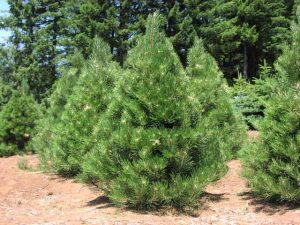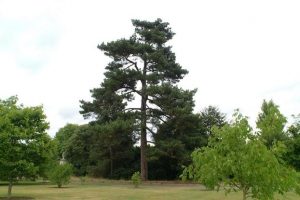Austrian Pine
The Austrian Pine also called the black pine is one of the toughest pine species widely spread across southern and eastern Mediterranean Europe as well as the mountainous regions of North Africa. These pine trees have gained prominence in the Midwestern US states due to their adaptability, bold texture, and fullness of foliage.
Scientific Classification
| Kingdom | Plantae |
| Division | Pinophyta |
| Class | Pinopsida |
| Order | Pinales |
| Family | Pinaceae |
| Genus | Pinus |
| Subgenus | Pinus |
| Scientific Name | Pinus nigra |
Quick Information
| Other Names | Corsican Pine, Pin noir (French), Pino Nigro (Spanish) |
| Subspecies | Pinus nigra subsp. nigra, Pinus nigra subsp. salzmannii, Pinus nigra subsp. laricio, Pinus nigra subsp. pallasiana, Pinus nigra subsp. dalmatica |
| Size | 66-180 ft (20-55 m) tall, spread of 20-40 ft at maturity |
| Identification | Leaves (Needles): Dark green, 4-6 inches long, two needles in each fascicle Cones: Ovoid, 2-4 inches long, scales are rounded; turn from green to yellow-buff or gray-buff upon maturity; dark gray seeds with yellow-buff wings Bark: Gray/yellowish-brown; have scaly plates, fissures increase with age |
| Tree Type | Evergreen |
| Distribution/Range | Southern, southeastern, and southwestern Europe; Turkey, Cyprus, northern Morocco, and northern Algeria; from Crimea (Ukraine), through the coastal areas of Black Sea to Krasnodar (Russia) |
| Hardiness Zones | 4-7 |
| Growth Rate | Medium to fast; 13-24 inches per year |
| Lifespan | Long-lived; more than 500 years |
| Growing Conditions | Winter Conditions: Can withstand temperatures down to -30° C Summer Conditions: Hot and humid Rain: From 610-1020 mm per year Sunlight: Full sun Soil Requirements: Alkaline, acidic, loamy, sandy, moist, clayey, and well-drained; somewhat tolerant to drought |
| Diseases and Pests | Root rots caused by Pythium debaryanum, Phytophthora cactorum, and Rhizoctonia solani; Dothistroma needle blight, Diplodia tip blight, Lophodermium needle cast caused by fungal pathogens; pine weevils, beetles, and aphids cause some damage; seedlings are often harmed by rabbits |
| Flowering/Fruiting | Dispersal of pollens and receptivity of ovulate strobili take place during May-June; staminate strobili fall off within a few week after dispersal; fertilization occurs 12-13 months after pollination |
| Breeding System | Monoecious |
| Seed Production | Seeds are borne after reaching 15-40 years; seed dispersal takes place during October-November in the second season |
| Seedling Development | Easily grows from seeds, can be transplanted |
| Wildlife Value | Provides nesting sites and shelters for birds including owls; squirrels and numerous bird species feed upon the seeds |
| Varieties/Cultivars | Austrian pine (‘Austriaca’), Turkish black pine (‘Caramanica’), Italian black pine (‘Italica’), Crimean pine (‘Pallasiana’), Dwarf Austrian pine (‘Hornibrookiana’), Atlas Mountains black pine (‘Mauretanica’), Corsican pine (‘Maritima’), Pyrenean pine (‘Salzmannii’) |
| Uses | Timber is used for fuel, paper manufacturing, construction; as ornamental trees in parks and gardens; occasionally as bonsai and Christmas trees; also used for windbreaks |
| IUCN Conservation Status | Least Concern |
Interesting Facts
- In the ancient times, the Romans considered the Austrian pines sacred and worshiped the trees.
- Shelterbelts comprising millions of Austrian pine trees were planted in the Great Plains to prevent soil erosion during the Dust Bowl.
- In New Zealand, Austrian pines are recognized as an invasive species because it displaces or destroys the plant communities inhabiting the tussock grassland.
References













